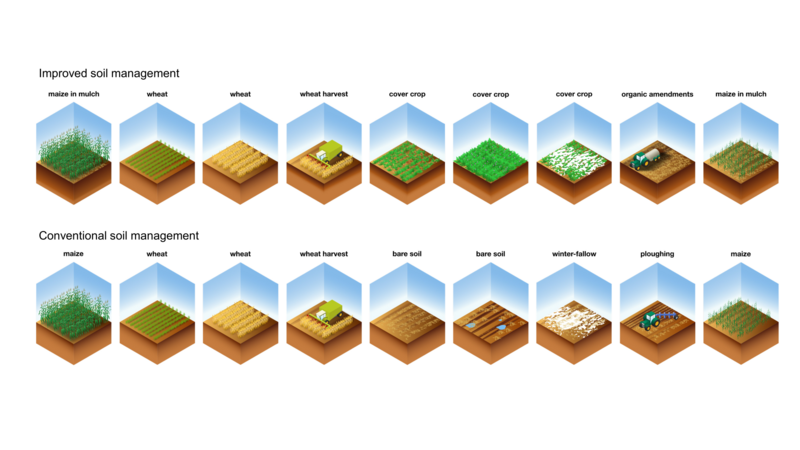Soil structure determines how much and how quickly water can infiltrate into the soil during heavy precipitation events, preventing surface runoff and erosion, and how much water can be taken up by plants. In SoilX, natural and social scientists are jointly investigating how to effectively improve soil structure in Europe in order to mitigate the adverse impacts of future droughts and extreme precipitation.
How does soil structure change with soil management?
SoilX collects empirical evidence of the effects of soil management on the water regulation functions of the soil. The hydraulic properties of soils are measured in a uniform manner in long-term experiments in six European countries (Sweden, Denmark, Belgium, Switzerland, Spain, Austria, Czech Republic). The focus is on determining differences in soil structure driven by differing intensities of soil cultivation and organic carbon inputs with varying crop rotations, catch crops or organic fertilisers. The measurement results will show which soil structural improvements are achievable through management changes depending on prevailing soil and climate conditions.
How can soil structural improvements enhance the climate resilience of cropping systems?
Selected biophysical models are used to estimate the benefits of soil structural improvements for mitigating the impacts of increasing precipitation extremes (i.e. drought and heavy precipitation) under climate change. In addition to influences on the soil water balance, the influences of soil structural changes on nutrient losses and plant growth are also evaluated in various regions of Europe. This allows possible synergies and trade-offs between climate adaptation, climate mitigation and resource efficiency goals to be identified.
Getting farmers on board
Socio-economic factors that hinder or enable the adoption of beneficial farming practices will be identified through farmer interviews. Farmers, agricultural advisors and representatives of regional offices will be directly involved in the project in all study regions. The synthesised project findings will ultimately improve the knowledge base for advising farmers and policy makers at European and regional levels and thus contribute to the successful implementation of soil structural improvement measures in Europe.
Contact







